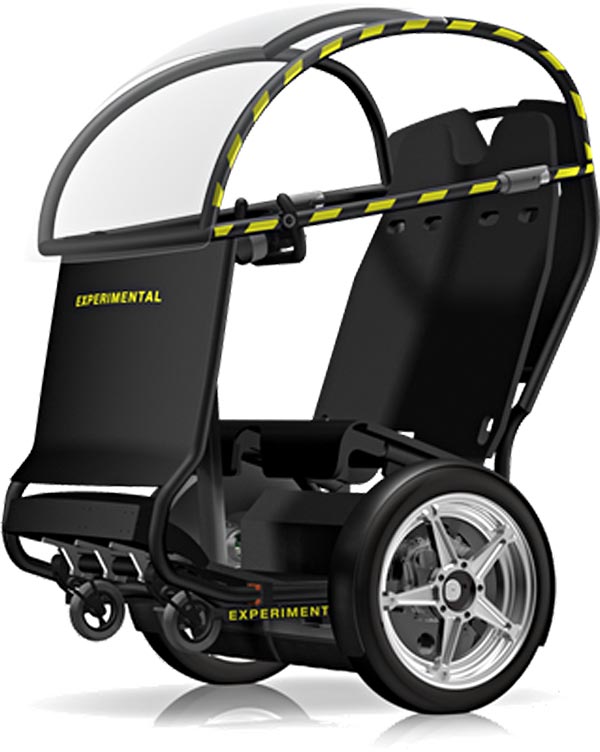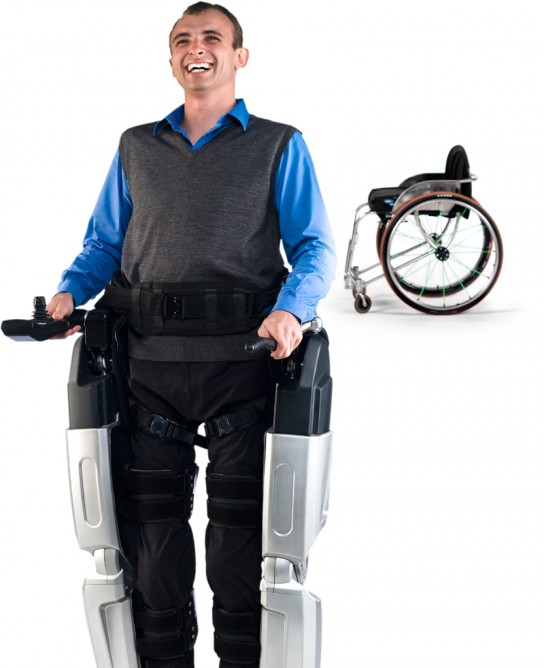Wheelchair Design Technology
It has been argued that the wheelchair design world has been stale for the last several decades, especially in the active outdoor and electric power wheelchair markets. Many have tried to come up with the elusive next generation wheelchair design concept only to fall back on existing conventional materials and technology.
All agree a new technological advancement is the most likely key needed to bring that break-through next generation design to life. Just as lightweight alloys and thermo plastics revolutionized manufacture of the wood and iron antique wheelchairs you can see in our gallery, a new technology will break us from current wheelchair design conventions and constraints.
Technology in Wheelchair Design

Segway technology came close to being the new cutting edge wheelchair design key spawning marvelous concepts such as the iBot wheelchair capable of climbing stairs and raising a person to a standing height. Like any new technology it’s quite expensive, around $26,000 USD and legal issues such as the doctors who write off the iBot as “not medically necessary” has seen Johnson & Johnson cease marketing of the iBot wheelchair.
Perhaps by appealing to a broader market the PUMA (Personal Urban Mobility and Accessibility) vehicle, a collaboration of GM and Segway will pick up where others failed and further develop this technology into an effective end user product.
The PUMA is powered by lithium batteries, two self balancing in-wheel electric motors controlled by gyroscopes, and a fly-by-wire system. While the PUMA can cover 35 miles on one charge it is expected this range will quickly be extended to 50 miles or more. Digital network information on nearby parking spaces, charge points and coffee shops, as well as vehicle-to-vehicle communications can be displayed by the PUMA on connected devices such as the iPhone.
Emerging Cutting Edge Technology
Thought controlled electric wheelchairs and other disability assistive devices are being developed with the mapping of the human brains neuron electrical activity deciphered through complex mathematical algorithms. Scientists can already determine the single words a person is thinking within 90% accuracy.
Electro-magnetic hover technology is another development area pertaining to future wheelchair design. Using super conductors and fields of magnetic flux hover technology at the moment is only small scale, suspending solid objects not much bigger than a tennis ball. Scaling this up to a real world application, such as a wheelchair suspending a whole person, is proving quite a challenge. Prototypes are still some way off yet.
Powered Robotic Exoskeletons
Robotics are not exactly cutting edge technology, but the design of robotic devices has certainly influenced wheelchair design concepts and custom disability assistive devices for amputee’s, and will continue to into the future. Robotic exoskeletons were born from military design to increase capabilities of military ground personnel. The HULC enables soldiers to carry loads greater than 130 pounds and recharge equipment in transit.

HAL by the Japanese company Cyberdyne works by capturing bio-electrical signals detected on the surface of the skin, before the muscles actually move. The system analyzes these signals to determine how much power the wearer intends to generate and calculates how much power assist must be generated by which power units. The power units then generate the necessary torque and the limbs move. All this takes place a split second before the muscles start moving, allowing the relevant robotic joints to move in unison with the wearer’s muscles.
Another spin-off robotic exoskeleton called REX by New Zealand manufacturers was specifically designed with wheelchair users in mind. It puts wheelchair users back on their feet, enabling a person to stand, walk and go up and down stairs and slopes. REX is only really suitable for manual wheelchair users who can self-transfer and operate hand controls and REX’s developers are quick to point out that REX is not intended as a replacement for a wheelchair, but as a complement to a wheelchair.
Bureaucratic Dumbing Down of Wheelchair Technology
While we are very fortunate to live in this day and age far removed from antique wheelchairs constructed from iron and wood, we have lost some of the common sense born from sheer necessity that was afforded in those days. Most concept wheelchairs today never make it to market even if they receive (in the USA) National Institute of Health funding.
In most modernized countries a regulatory bodies extensive testing requirements in line with Medicare type regulations see smaller outfits and innovators struggle to achieve recognition let-alone funding of their wheelchair design concepts. These bureaucratic obstacles often require professional legal assistance which only further compounds time and cost restraints.
It is fair to say the majority of wheelchair users are not concerned with standing to speak to a person at eye level or zooming to the mall at 30 mph. Most who have used a standing wheelchair in public find the person they stood to speak to eye-to-eye looks down turning the topic to “wow how does that gizmo work” which detracts from the purpose. If however you have sat in a shop waiting for someone to reach a can of beans from the top shelf for you, the concept of a standing wheelchair suddenly becomes a worthy concern.
Conclusion
As technology advances so will the design and manufacture of wheelchairs and other assistive technologies. Those successful in attaining funding to develop wheelchair technology and design, along with a customer base fortunate enough to afford or qualify for assistance with purchase of new concepts, improve the lives of wheelchair users.
Every day people with spinal cord injury rely on “unfriendly” equipment designed by medical companies and employees with no disability whatsoever. Custom equipment however, is often designed by someone with — or for — a particular disability and therefore it more greatly enhances quality of life. Wheelchair design and technology has come a long way since the turn of the 19th century and in this new millennium we can look forward to some very exciting concepts that may one day make the term disability extinct.
wow looks high quality
You missed my home build 15 mph lithium powered wheelchair!
http://www.wheelchairdriver.com/BM-MK3-lithium-fast-powerchair.htm
Shorter, narrower, lighter than most indoor only chairs. But faster and with better range than outdoor only chairs. Did I mention it fits my van, wheelies, and works in sand or snow too?
Burgerman
there is a problem concerns to our project related to wheelchair its a convertible wheelchair to stretcher but we r not able to prepare a design report on it so can u help out response is urgently needed as 1 month left to present d project